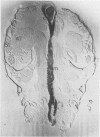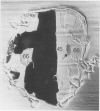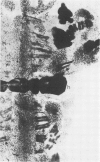Abstract
Our purpose is to assess the effects of lethal alleles of engrailed on cells of the internal organs of Drosophila. Using nuclear transplantation we make mosaic flies that contain regions made by engrailed-lethal cells that are genetically labelled. We find that engrailed-lethal cells cause defects in some parts of the epidermis and central nervous system. Most of the internal organs of the fly are assessed and of those, all organs and tissues derived from the endoderm or the splanchnic and somatic mesoderm are normal; flies carrying engrailed-lethal cells in large areas of these organs are viable. We postulate that segments of the mesoderm are single units of cell lineage and that, unlike the ectoderm, they are not subdivided into anterior and posterior compartments.
Full text
PDF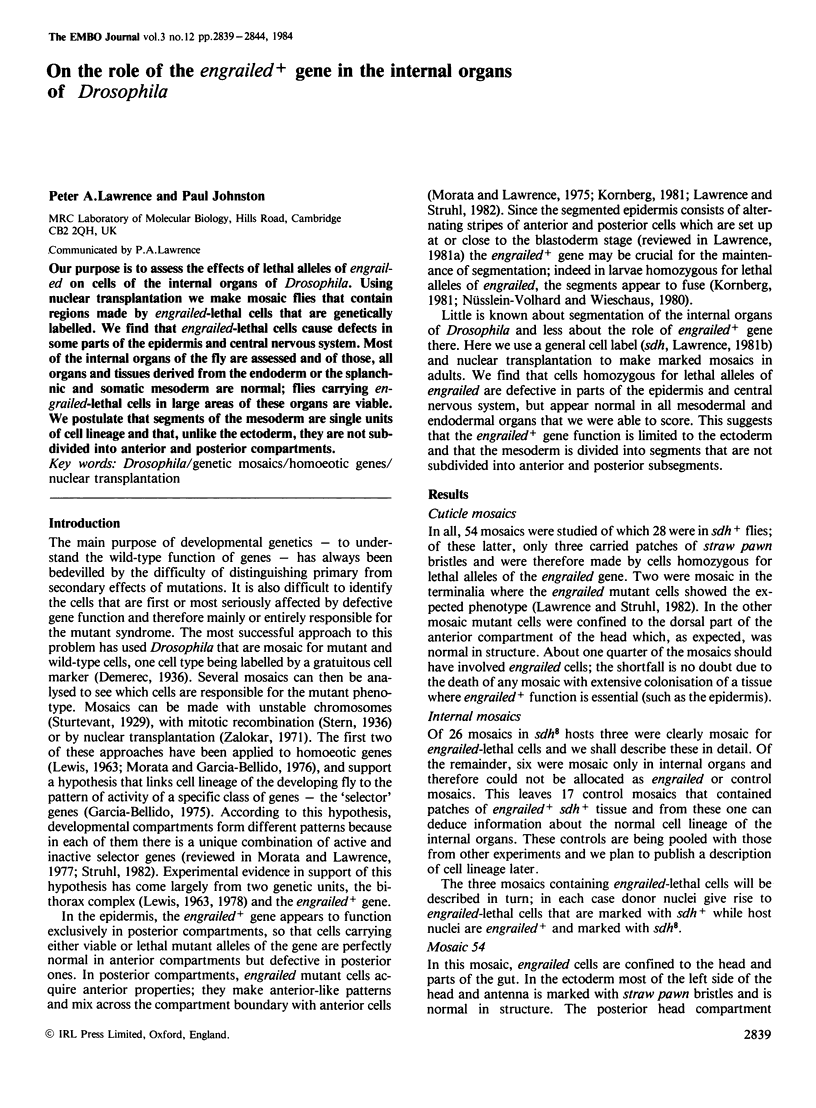
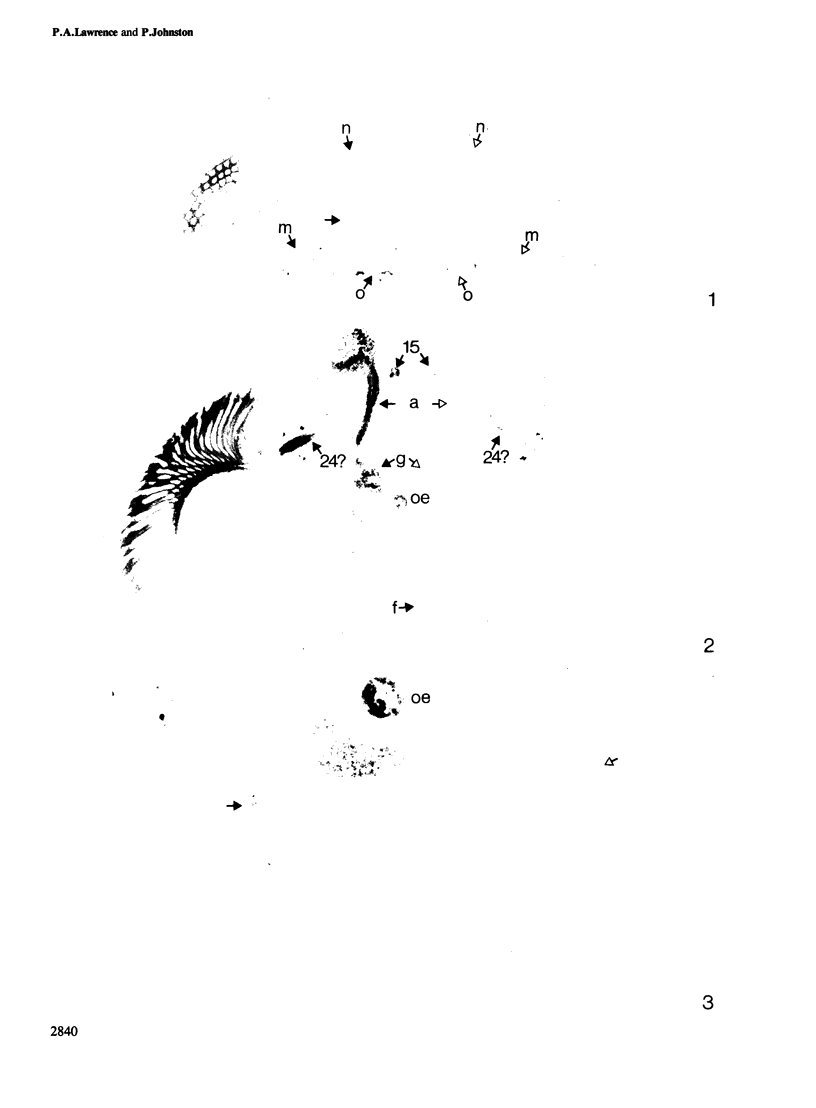
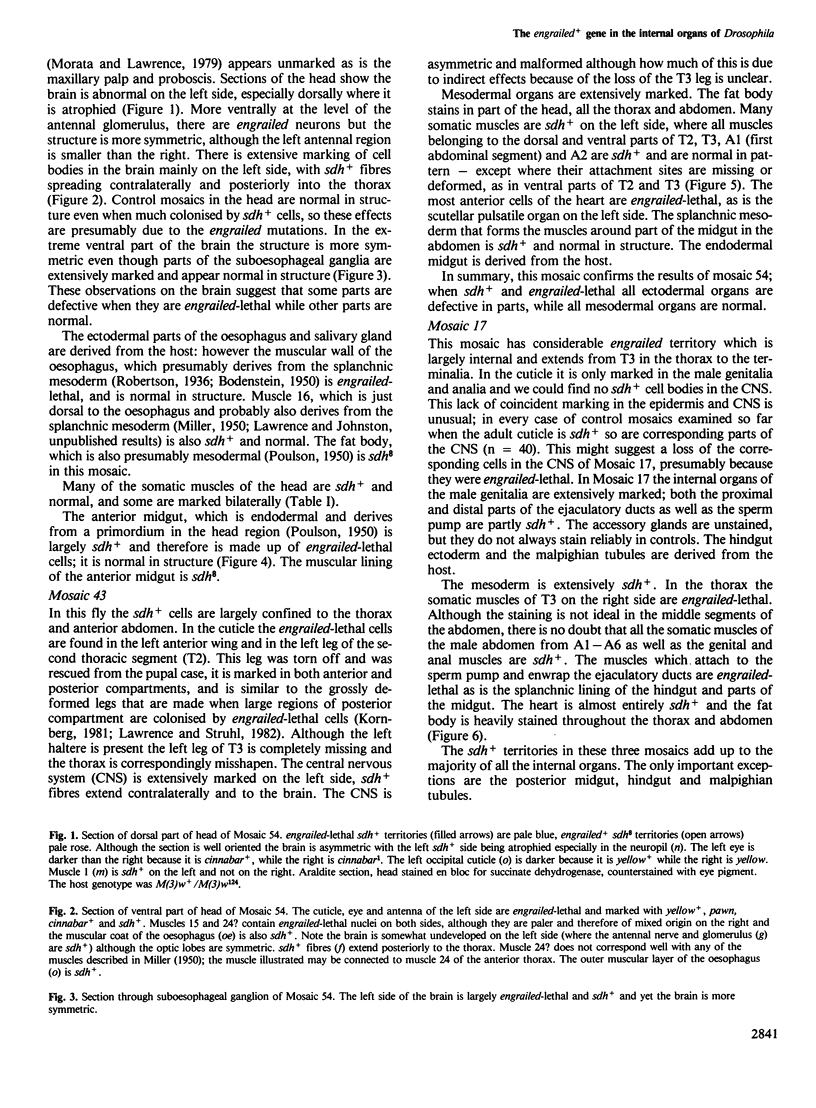
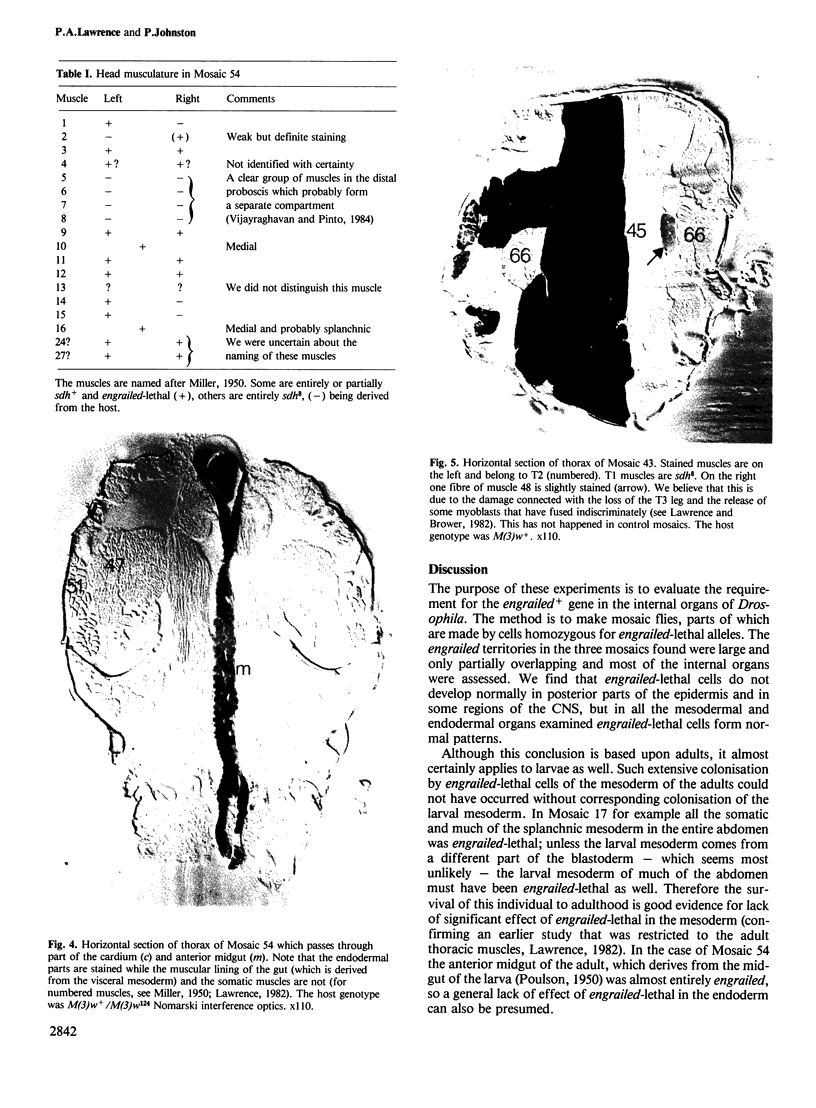
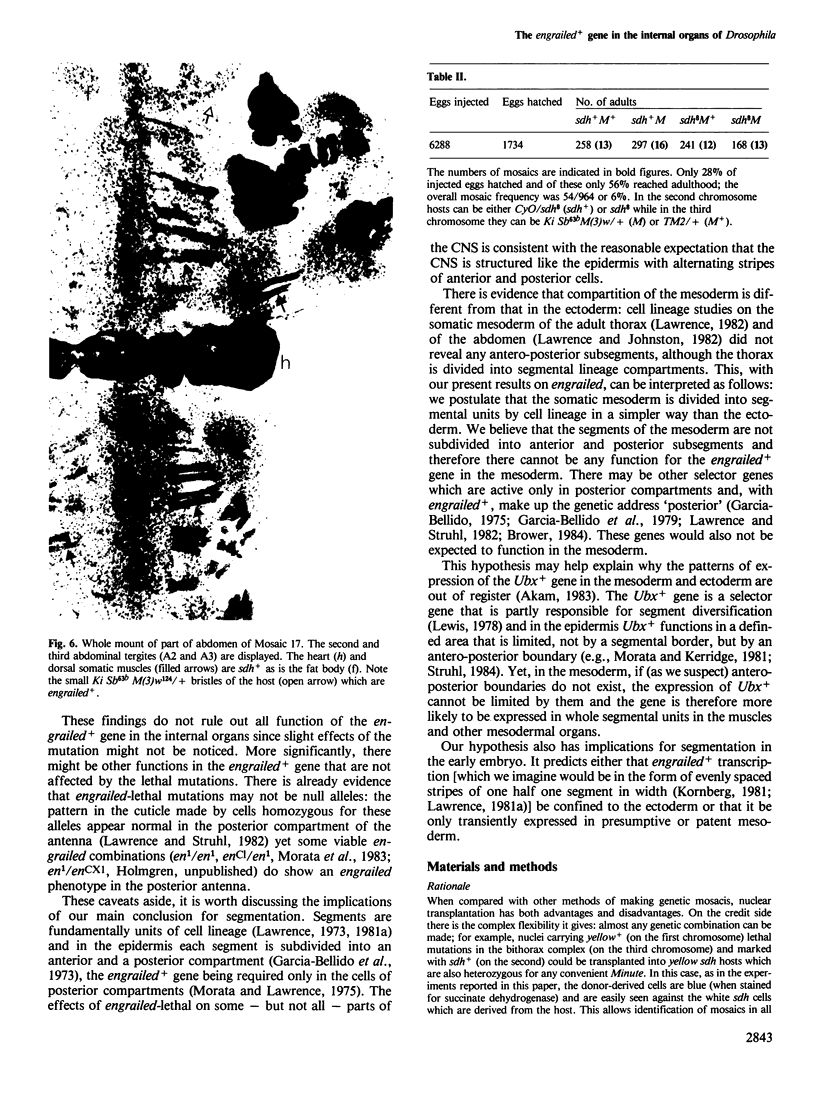

Images in this article
Selected References
These references are in PubMed. This may not be the complete list of references from this article.
- Akam M. E. The location of Ultrabithorax transcripts in Drosophila tissue sections. EMBO J. 1983;2(11):2075–2084. doi: 10.1002/j.1460-2075.1983.tb01703.x. [DOI] [PMC free article] [PubMed] [Google Scholar]
- Brower D. L. Posterior-to-anterior transformation in engrailed wing imaginal disks of Drosophila. Nature. 1984 Aug 9;310(5977):496–497. doi: 10.1038/310496a0. [DOI] [PubMed] [Google Scholar]
- Demerec M. Frequency of "Cell-Lethals" among Lethals Obtained at Random in the X-Chromosome of Drosophila Melanogaster. Proc Natl Acad Sci U S A. 1936 Jun;22(6):350–354. doi: 10.1073/pnas.22.6.350. [DOI] [PMC free article] [PubMed] [Google Scholar]
- Fischbach K. F., Technau G. Cell degeneration in the developing optic lobes of the sine oculis and small-optic-lobes mutants of Drosophila melanogaster. Dev Biol. 1984 Jul;104(1):219–239. doi: 10.1016/0012-1606(84)90050-2. [DOI] [PubMed] [Google Scholar]
- Garcia-Bellido A., Dapena J. Induction, detection and characterization of cell differentiation mutants in Drosophila. Mol Gen Genet. 1974;128(2):117–130. doi: 10.1007/BF02654485. [DOI] [PubMed] [Google Scholar]
- García-Bellido A. Genetic control of wing disc development in Drosophila. Ciba Found Symp. 1975;0(29):161–182. doi: 10.1002/9780470720110.ch8. [DOI] [PubMed] [Google Scholar]
- Kornberg T. Engrailed: a gene controlling compartment and segment formation in Drosophila. Proc Natl Acad Sci U S A. 1981 Feb;78(2):1095–1099. doi: 10.1073/pnas.78.2.1095. [DOI] [PMC free article] [PubMed] [Google Scholar]
- Lawrence P. A. A clonal analysis of segment development in Oncopeltus (Hemiptera). J Embryol Exp Morphol. 1973 Dec;30(3):681–699. [PubMed] [Google Scholar]
- Lawrence P. A. A general cell marker for clonal analysis of Drosophila development. J Embryol Exp Morphol. 1981 Aug;64:321–332. [PubMed] [Google Scholar]
- Lawrence P. A. Cell lineage of the thoracic muscles of Drosophila. Cell. 1982 Jun;29(2):493–503. doi: 10.1016/0092-8674(82)90166-0. [DOI] [PubMed] [Google Scholar]
- Lawrence P. A., Johnston P. Cell lineage of the Drosophila abdomen: the epidermis, oenocytes and ventral muscles. J Embryol Exp Morphol. 1982 Dec;72:197–208. [PubMed] [Google Scholar]
- Lawrence P. A., Johnston P. The genetic specification of pattern in a Drosophila muscle. Cell. 1984 Mar;36(3):775–782. doi: 10.1016/0092-8674(84)90357-x. [DOI] [PubMed] [Google Scholar]
- Lawrence P. A., Struhl G. Further studies of the engrailed phenotype in Drosophila. EMBO J. 1982;1(7):827–833. doi: 10.1002/j.1460-2075.1982.tb01255.x. [DOI] [PMC free article] [PubMed] [Google Scholar]
- Lawrence P. A. The cellular basis of segmentation in insect. Cell. 1981 Oct;26(1 Pt 1):3–10. doi: 10.1016/0092-8674(81)90027-1. [DOI] [PubMed] [Google Scholar]
- Lewis E. B. A gene complex controlling segmentation in Drosophila. Nature. 1978 Dec 7;276(5688):565–570. doi: 10.1038/276565a0. [DOI] [PubMed] [Google Scholar]
- Morata G., Kerridge S. Sequential functions of the bithorax complex of Drosophila. Nature. 1981 Apr 30;290(5809):778–781. doi: 10.1038/290778a0. [DOI] [PubMed] [Google Scholar]
- Morata G., Kornberg T., Lawrence P. A. The phenotype of engrailed mutations in the antenna of Drosophila. Dev Biol. 1983 Sep;99(1):27–33. doi: 10.1016/0012-1606(83)90250-6. [DOI] [PubMed] [Google Scholar]
- Morata G., Lawrence P. A. Control of compartment development by the engrailed gene in Drosophila. Nature. 1975 Jun 19;255(5510):614–617. doi: 10.1038/255614a0. [DOI] [PubMed] [Google Scholar]
- Morata G., Lawrence P. A. Development of the eye-antenna imaginal disc of Drosophila. Dev Biol. 1979 Jun;70(2):355–371. doi: 10.1016/0012-1606(79)90033-2. [DOI] [PubMed] [Google Scholar]
- Morata G., Lawrence P. A. Homoeotic genes, compartments and cell determination in Drosophila. Nature. 1977 Jan 20;265(5591):211–216. doi: 10.1038/265211a0. [DOI] [PubMed] [Google Scholar]
- Morata G., Ripoll P. Minutes: mutants of drosophila autonomously affecting cell division rate. Dev Biol. 1975 Feb;42(2):211–221. doi: 10.1016/0012-1606(75)90330-9. [DOI] [PubMed] [Google Scholar]
- Nüsslein-Volhard C., Wieschaus E. Mutations affecting segment number and polarity in Drosophila. Nature. 1980 Oct 30;287(5785):795–801. doi: 10.1038/287795a0. [DOI] [PubMed] [Google Scholar]
- Stern C. Somatic Crossing over and Segregation in Drosophila Melanogaster. Genetics. 1936 Nov;21(6):625–730. doi: 10.1093/genetics/21.6.625. [DOI] [PMC free article] [PubMed] [Google Scholar]
- Struhl G. Genes controlling segmental specification in the Drosophila thorax. Proc Natl Acad Sci U S A. 1982 Dec;79(23):7380–7384. doi: 10.1073/pnas.79.23.7380. [DOI] [PMC free article] [PubMed] [Google Scholar]
- Zalokar M. Transplantation of nucle in Drosophila melanogaster. Proc Natl Acad Sci U S A. 1971 Jul;68(7):1539–1541. doi: 10.1073/pnas.68.7.1539. [DOI] [PMC free article] [PubMed] [Google Scholar]






